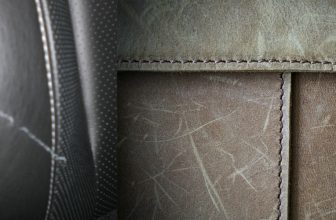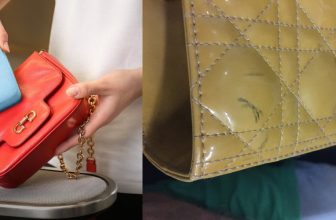How to Dry Leather
Drying leather properly is a crucial skill to maintain its quality and longevity. Whether you’ve encountered rain-soaked shoes, a wet leather bag, or simply cleaned your leather goods, understanding how to dry leather effectively is essential to prevent damage and maintain its natural charm. The porous nature of leather requires careful consideration to avoid warping, cracking, or loss of suppleness during the drying process.

From patting off excess moisture and using absorbent materials to employing gentle heat sources, this guide will delve into the art of drying leather. Whether you’re a leather enthusiast or a casual user, these insights and techniques will help you navigate the process of preserving the integrity and beauty of your leather items, ensuring they continue to stand the test of time and weather the elements gracefully.
Importance of Proper Drying Techniques to Maintain Leather Quality
When working with leather, proper drying techniques are essential to ensure the longevity of your product. Leather is a natural material and can be easily damaged by over-drying or improper methods. To prevent this, it is important to understand the best practices for drying leather in order to maintain its quality and durability.
The first step in properly drying leather is to ensure that the material is completely clean and free of dirt, oils, and other debris. This can be achieved by using a soft brush or damp cloth to gently remove any foreign objects from the surface. After cleaning, the leather should then be left to dry naturally in a well-ventilated area away from direct sunlight.
If air drying is not an option, using a hairdryer on the lowest heat setting can also be effective. However, it is important to be careful not to over-dry the material as this can cause the leather to become brittle or even crack. It is best to start slow and gradually increase the heat in order to avoid any unwanted damage.
Another way to dry leather is by using a leather conditioner. This is an effective method because it helps to restore the leather’s natural oils which were lost during the drying process. When using a conditioner, be sure to use only small amounts and apply evenly to avoid over-conditioning the material.
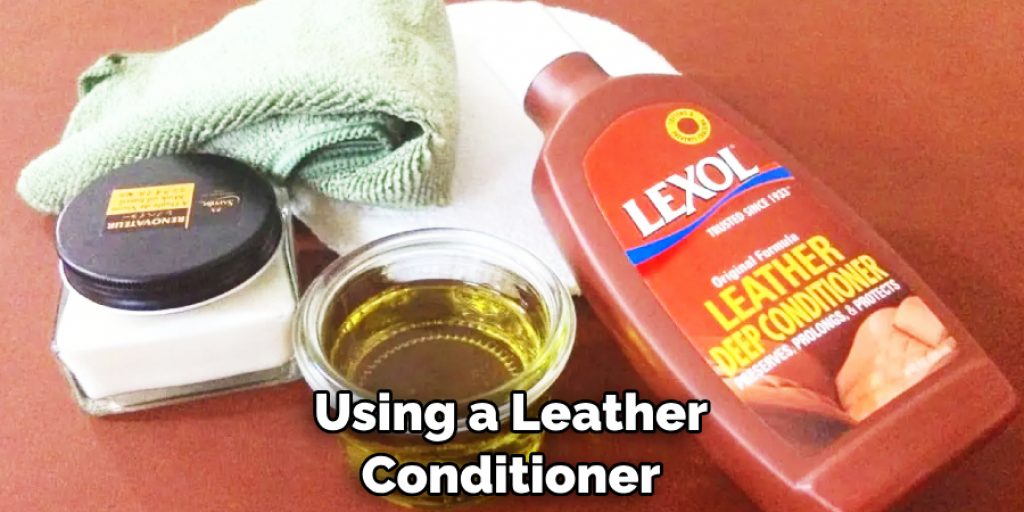
Leather Type and Thickness
When you’re drying your leather, how you do it depends on the type of leather and its thickness. Thicker pieces of leather often require more care and time to dry properly, as they need to be dried slowly in order to prevent any damage from occurring.
For thinner pieces of leather, you can use a blow dryer or other direct heat source to speed up the process. However, always make sure that you’re using a low setting and keep the heat moving around so as not to cause any damage.
When drying your leather, never put it directly onto heat sources like radiators or fireplaces, as this will dry out the leather too quickly and could cause it to crack or shrink. If possible, drying in an area with a good air circulation will help the leather dry more evenly.
Additionally, if you’re drying your leather outdoors on a sunny day, make sure that it’s not in direct sunlight as this could cause the leather to fade or distort. To help keep your leather soft and supple during the drying process, you can also use a small amount of leather conditioner. This will help prevent it from becoming brittle or cracked as it dries.
Once your leather is dry, storing it in a cool, dry place away from direct sunlight will help ensure that it stays in good condition. Additionally, regularly treating your leather with a good quality leather conditioner will help keep it soft and supple for years to come. With the right care, your leather can last you for many years.
10 Steps How to Dry Leather
Clean the Leather
Before you begin the drying process, it is important to clean the leather. This will help to remove any dirt, dust, or oils that may be on the surface of the leather. To do this, use a soft cloth and a mild soap and water solution. Gently rub the leather in a circular motion to remove any debris before wiping it away with a damp cloth.
Remove Excess Water
Once you have finished cleaning the leather, it is time to remove any excess water from its surface. This can be done by blotting with a dry towel or using a vacuum cleaner with an upholstery attachment. Make sure not to press too hard as this could damage the leather fibers.
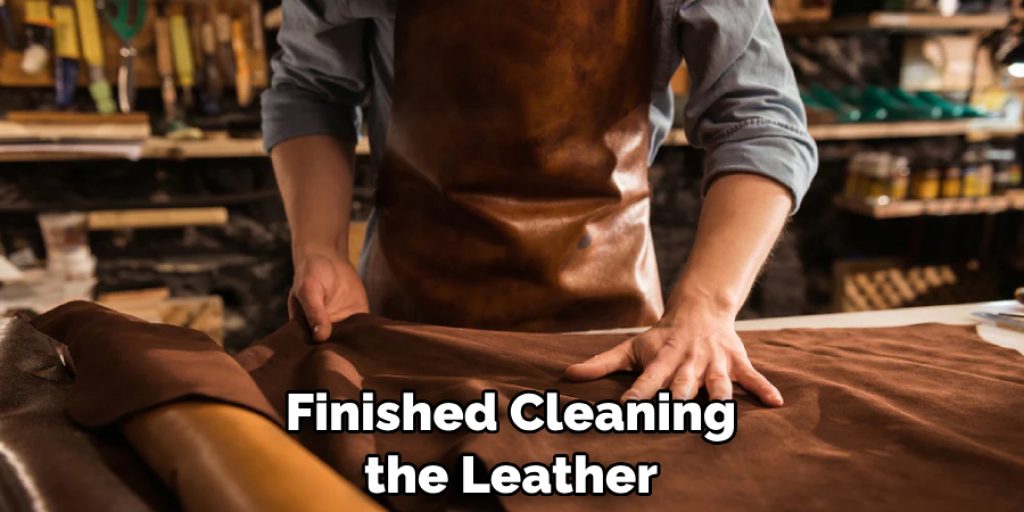
Place in Direct Sunlight
The next step in how to dry leather is to place it in direct sunlight for several hours. This will help speed up the drying process and ensure that all moisture has been removed from the material. However, make sure not to leave it out for too long as this could cause fading or discoloration of the leather over time.
Use Fans or Dehumidifiers
If you are unable to place your leather item in direct sunlight, then you can use fans or a dehumidifiers to help speed up the drying process. Make sure that these items are placed at least three feet away from your leather item so that they do not blow directly onto it as this could cause further damage.
Stuff With Paper Towels
You can also stuff your leather item with paper towels in order to absorb any remaining moisture from the inside of it. Make sure that you change out the paper towels every few hours until all of the moisture has been removed from the inside of your item.
Use A Hairdryer on Low Heat Setting
Once all of the excess water has been removed from your item, you can use a hairdryer set on its lowest heat setting in order to finish off removing any remaining moisture from within its fibers and seams. Move slowly around all areas of your item while keeping an eye on its temperature so that it does not become too hot and damage your item’s material over time.
Apply Leather Conditioner After Drying
Once all of the moisture has been removed from your item, you should apply a good quality leather conditioner which will help keep it soft and supple while preventing cracking over time. You should always test out any new products on an inconspicuous area first before applying them liberally across your entire item.
Allow Time For Conditioning
Once you have applied a good quality conditioner onto your dried item, allow some time for it to soak into its fibers before buffing gently with a soft cloth. This will help ensure that all areas have had enough time for conditioning and prevent cracking over time.
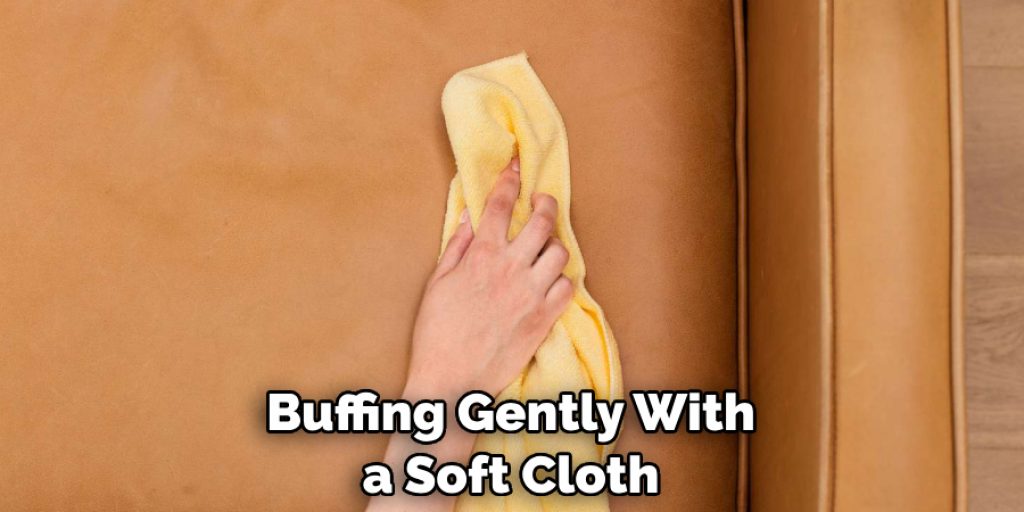
Store Properly
It is important that once your item has been properly dried and conditioned, store it somewhere cool and dry where there is minimal exposure to light, heat, or humidity. This will help preserve its longevity while ensuring that no further damage occurs due to improper storage conditions.
Regular Maintenance
Finally, make sure that you perform regular maintenance on your dried and conditioned items by using appropriate cleaning solutions when necessary and reapplying conditioner every few months depending on usage. Doing so will help ensure their longevity while keeping them looking great for many years!
Things to Consider When Drying Leather
When drying leather, it is important to consider a few factors:
- Temperature: Leather should be dried at a low temperature in order to avoid cracking and long-term damage. Too much heat can cause the material to become brittle and ultimately deteriorate over time.
- Humidity: Leather should be dried in an environment with low humidity levels. If the humidity is too high, it can cause the leather to become moldy or mildewed.
- Time: It should not be rushed and take the necessary time to naturally dry off at room temperature.
- Sunlight: This should be avoided all together as direct sunlight exposure can damage and fade the material over time.
- Airflow: Good airflow is important as it allows moisture to escape from the leather and discourage the growth of mold, mildew, and bacteria.
- Cleaning: Before drying leather, it should be thoroughly cleaned with a damp cloth to remove any dirt or debris that may have been left behind during its use.
- Conditioning: After the leather has been dried, it should be conditioned in order to maintain its strength and softness. Applying a leather conditioner after drying helps prevent the material from cracking or tearing over time.
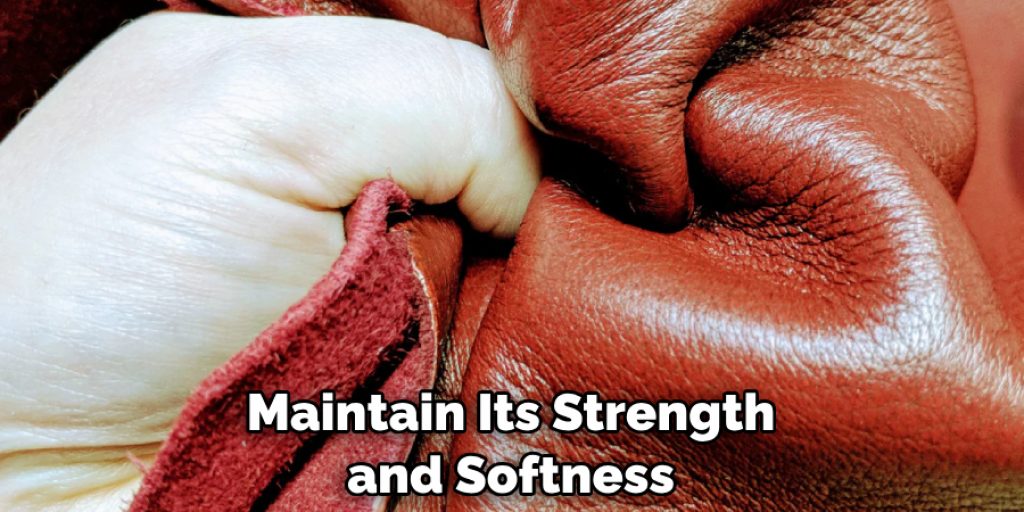
Conclusion
We hope this blog post was helpful to those looking for advice on how to dry leather. Remember, whatever the leather item may be, it’s important to do it right! Use the methods outlined in this post so your hard work lasts. To ensure lasting protection for your leather item and maintain suppleness, waterproofing treatments are recommended.
Leather, when cleaned and maintained properly, can bring beauty and utility to any space. Keep up a regular schedule of cleaning and drying to make sure that your leather items stay looking their best. With proper attention, your leather will look just as beautiful as the day you bought it for many years to come.


